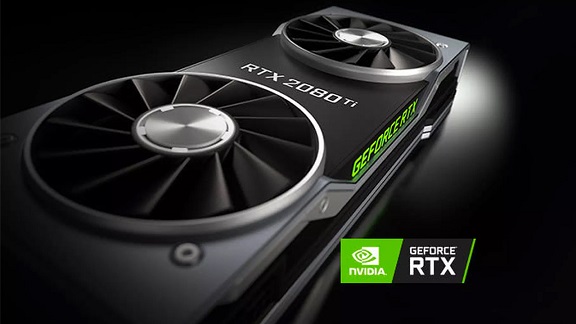GeForce RTX 2080 Ti

The GeForce RTX 2080 Ti is based on the TU102 GPU. The TU102 modification used in this model is exactly twice as large in terms of the number of blocks as the TU106, which appeared in the form of the GeForce RTX 2070 model. The TU102 used in the new product has an area of 754 mm² and 18.6 billion transistors versus 610 mm² and 15.3 billion transistors the top chip of the Pascal family - GP100.
A complete TU102 chip includes six Graphics Processing Clusters (GPCs), 36 Texture Processing Clusters (TPCs), and 72 Streaming Multiprocessors (SMs). Each of the GPC clusters has its own rasterization engine and six TPC clusters, each of which, in turn, includes two SM multiprocessors. All SMs contain 64 CUDA cores, 8 tensor cores, 4 texture units, a 256 KB register file, and 96 KB of configurable L1 cache and shared memory. For hardware ray tracing needs, each SM also has one RT core.
In total, in this version of TU102, 4352 CUDA cores, 72 RT cores, 544 tensor cores and 272 TMU units are obtained. The GPU communicates with the memory using 12 separate 32-bit controllers, resulting in a 384-bit bus in total. Eight ROPs and 512 KB of L2 cache are tied to each memory controller. That is, there are 96 ROP blocks and 6 MB of L2 cache in the chip.
In terms of the structure of SM multiprocessors, the new Turing architecture is very similar to Volta, and the number of CUDA cores, TMUs and ROPs has not grown too much compared to Pascal - and this is with such a complication and physical increase in the chip! But this is not surprising, because the main complexity was introduced by new types of computing units: tensor cores and ray tracing acceleration cores.
The CUDA cores themselves were also complicated, in which it became possible to simultaneously execute integer calculations and floating point operations, and the amount of cache memory was also seriously increased. Nvidia has worked with manufacturers to provide support for a new type of memory - GDDR6, and the entire new GeForce RTX family supports this type of chips that have a bandwidth of 14 Gb / s and at the same time are 20% more energy efficient compared to those used in the top Pascal GDDR5X- memory.
GDDR6 features provide high memory bandwidth, which is significantly higher than the previous generation of GPUs supporting GDDR5 and GDDR5X memory types. The GeForce RTX 2080 Ti reviewed today has a memory bandwidth of 616 GB / s, which is higher than its predecessors and than a competing video card using expensive HBM2 memory.
Features GeForce GeForce RTX 2080 Ti
|
||||||
|
Chip
|
||||||
|
Frequencies
|
||||||
|
Memory
|
||||||
|
Interface and TDP
|
This video card has 11 gigabytes of 352-bit GDDR6 memory, and the frequency of the graphics chip ranges from 1350 to 1545 MHz.



